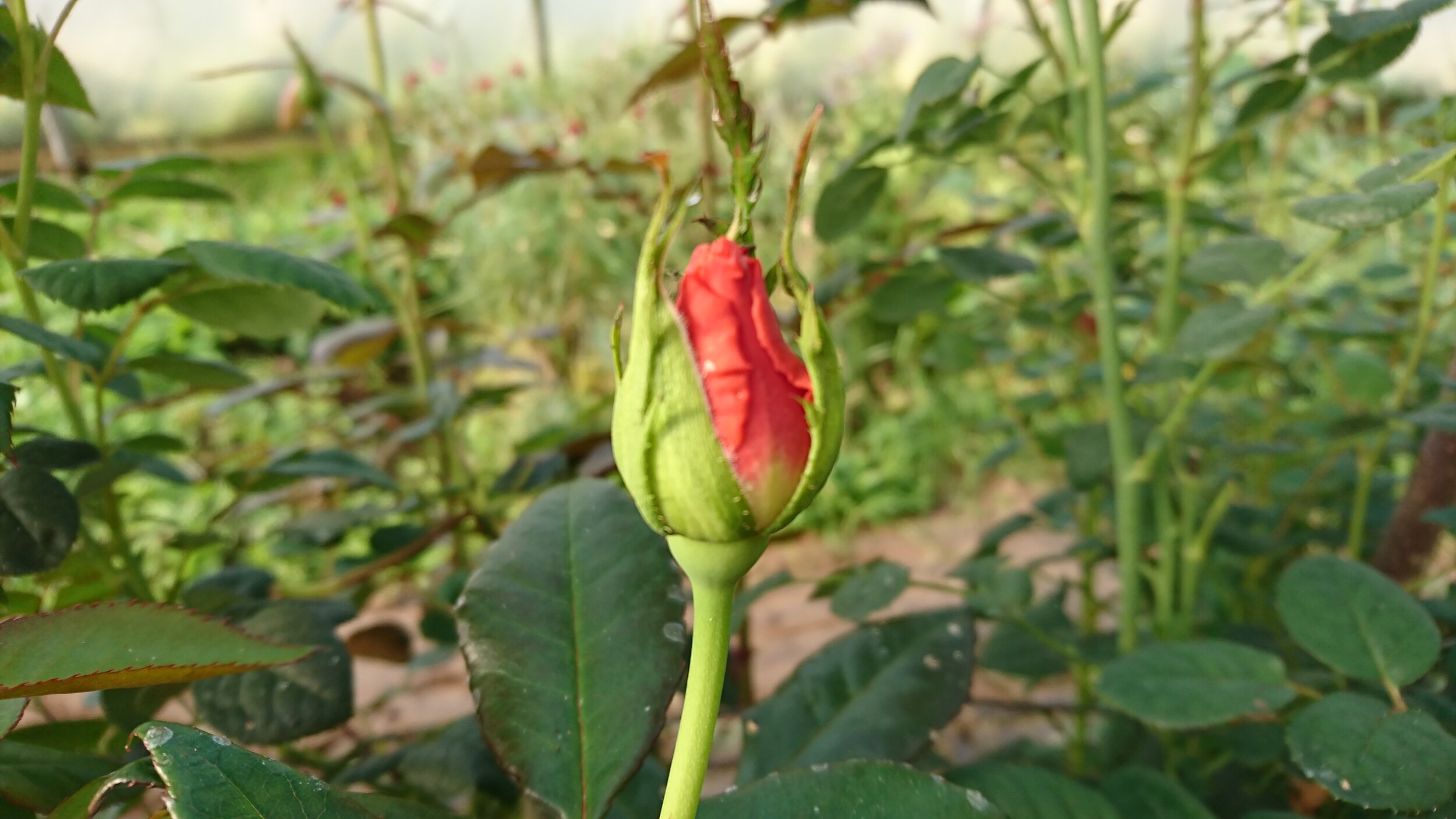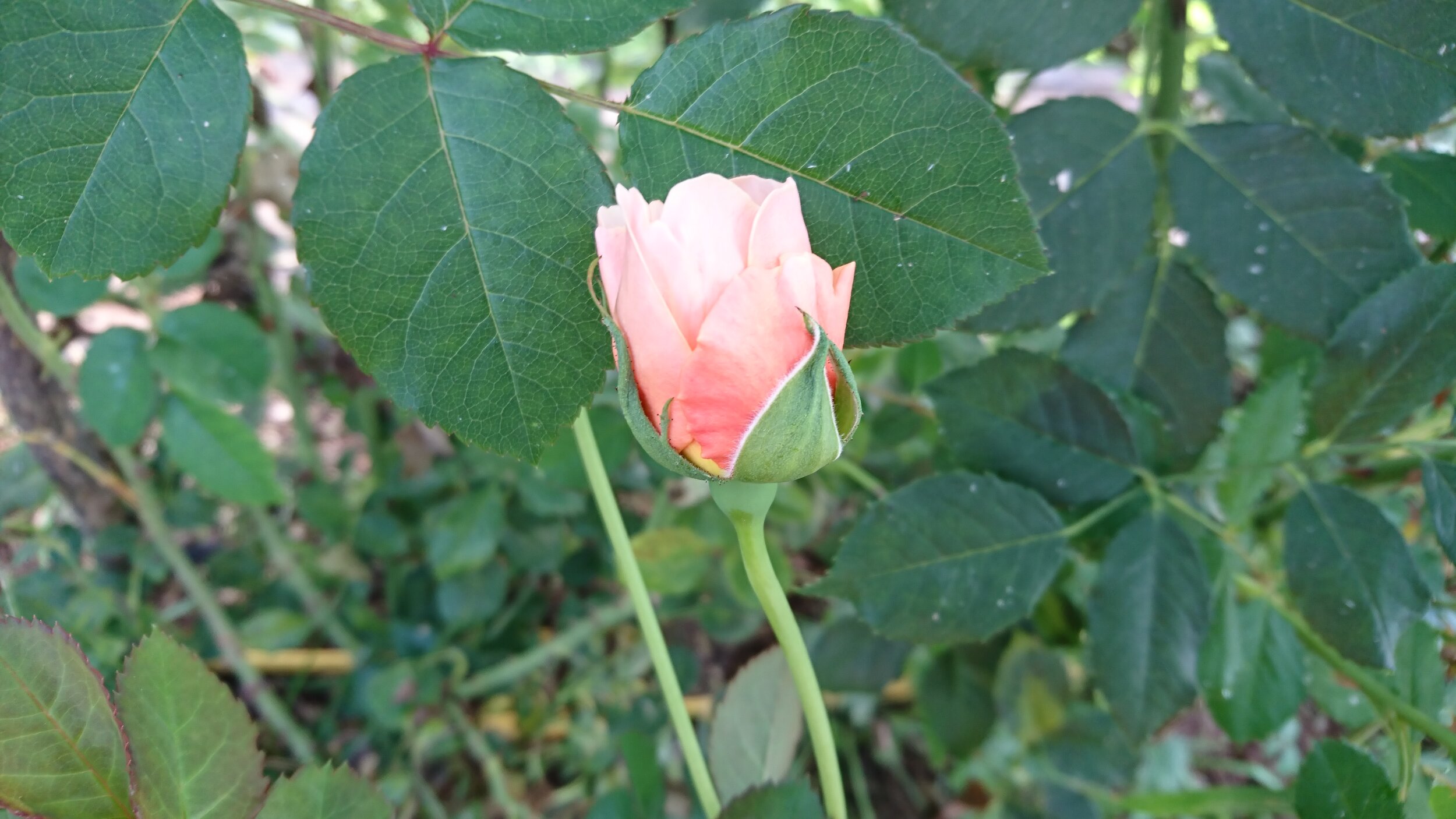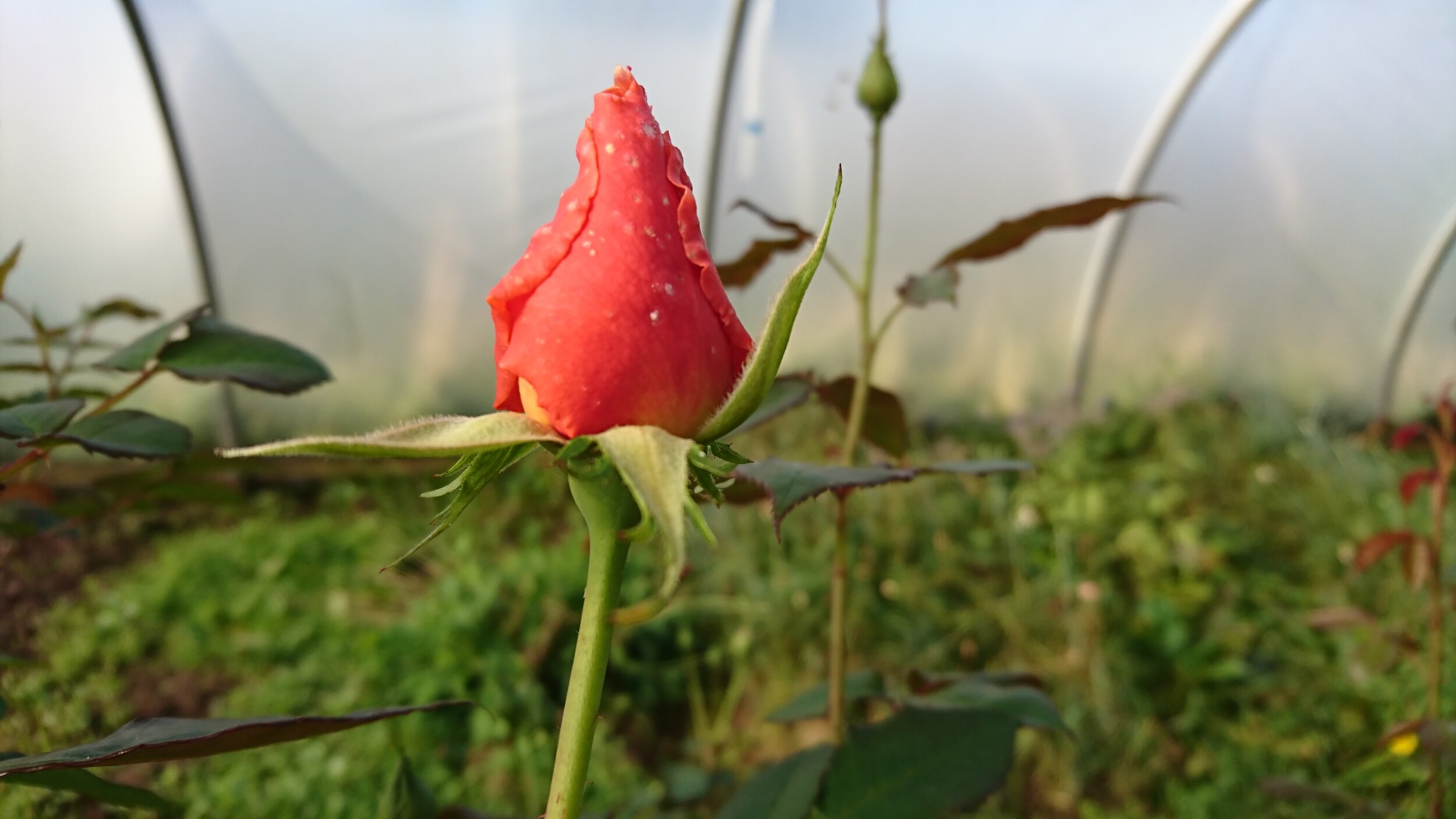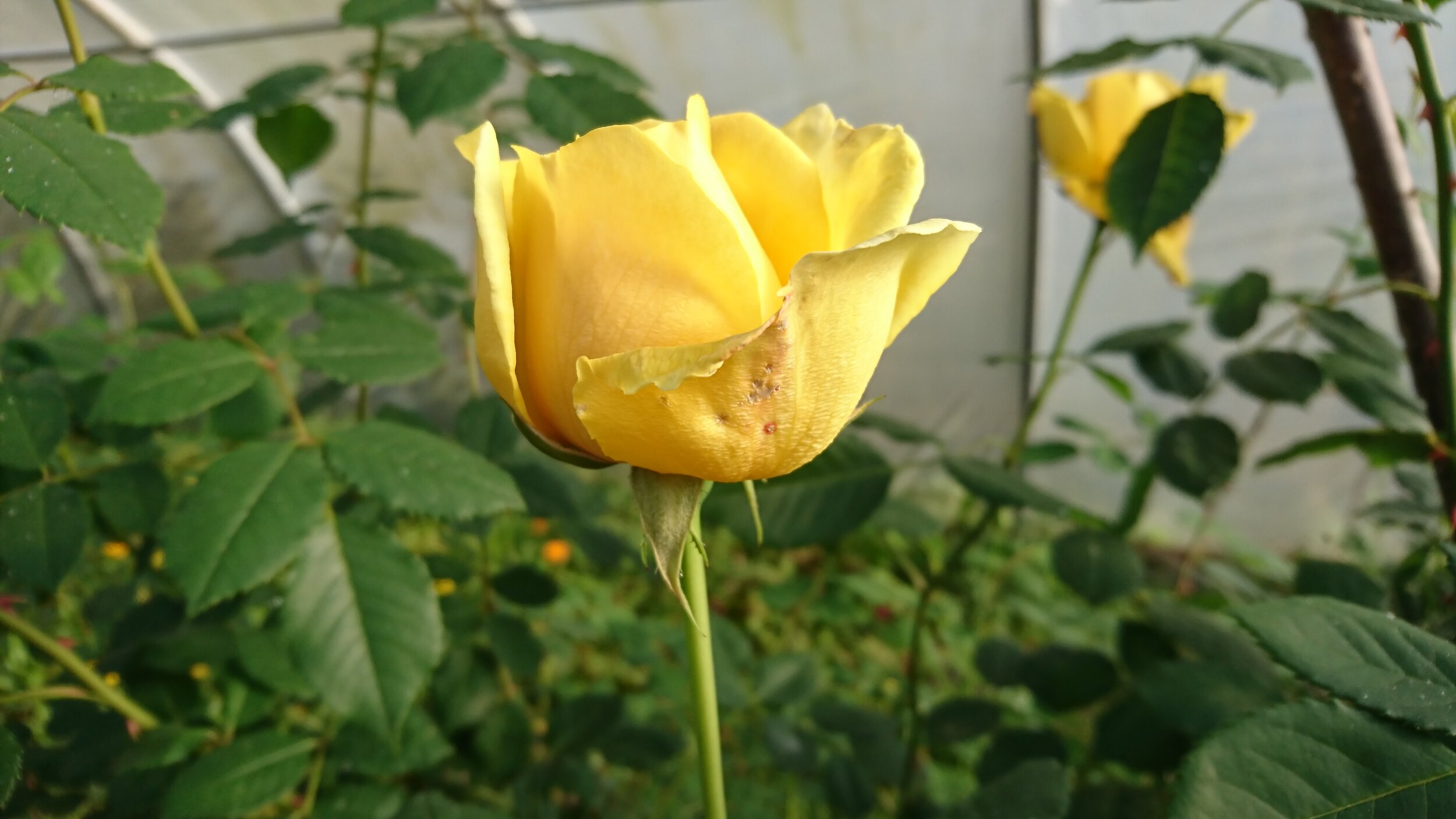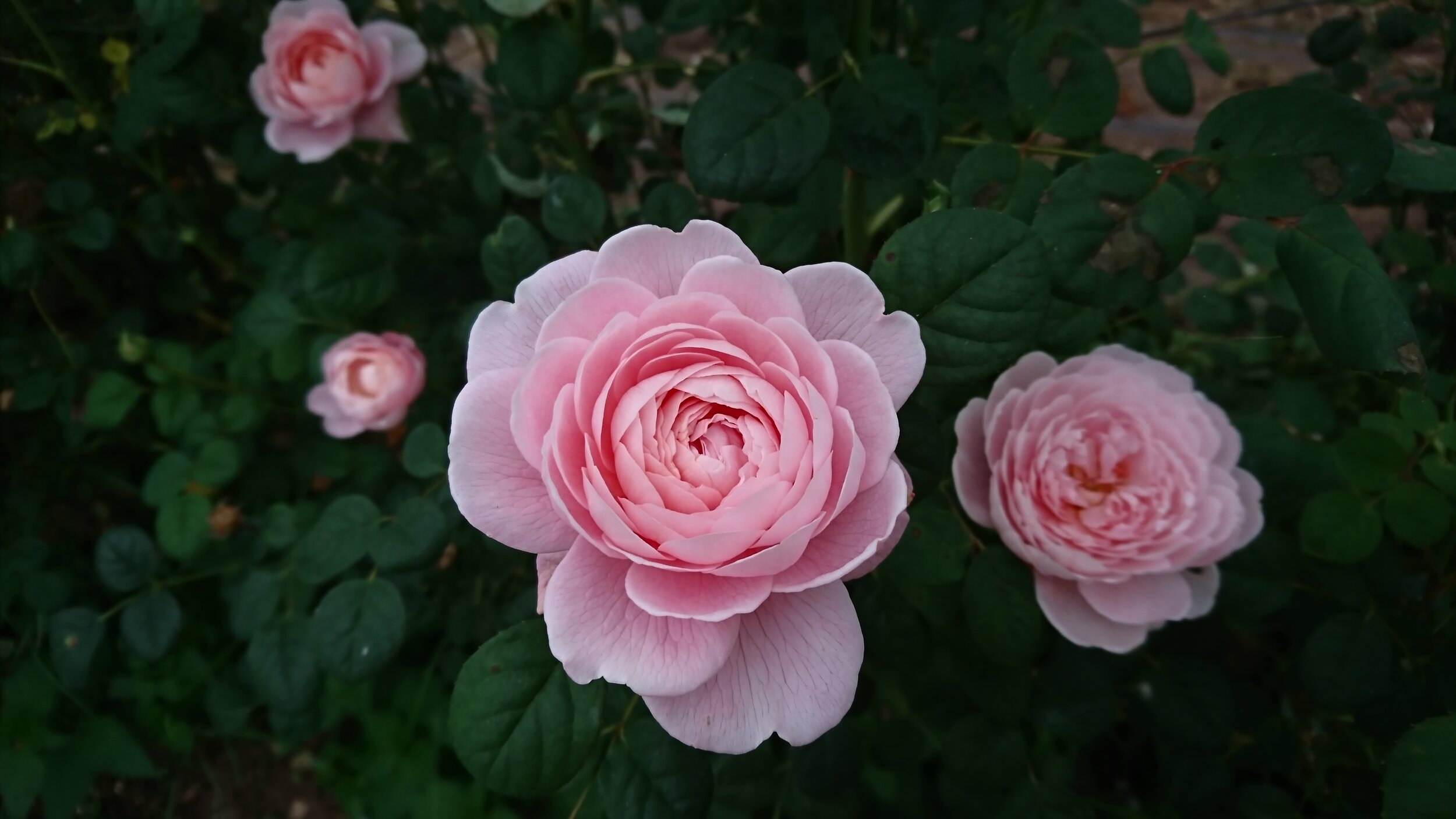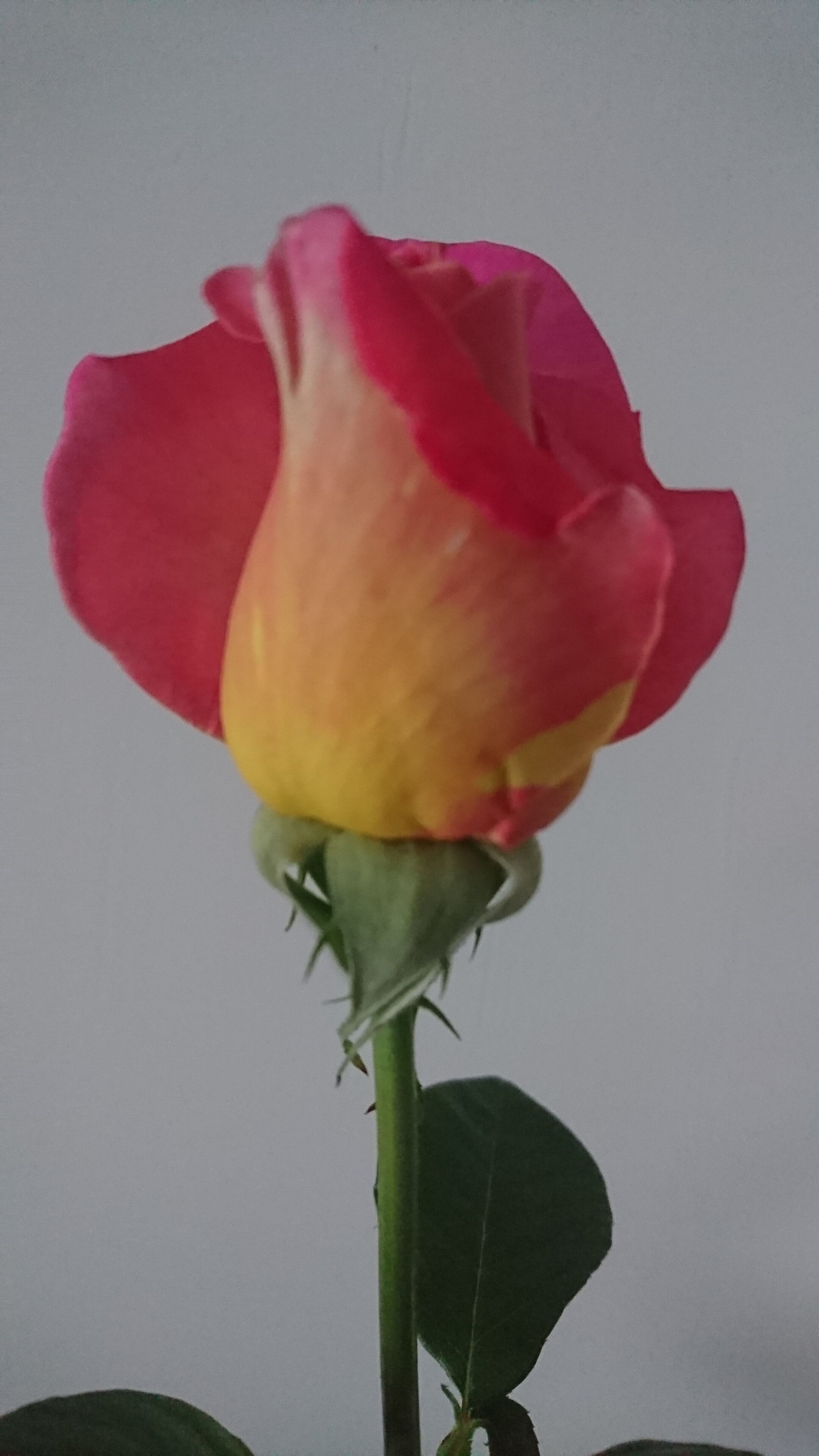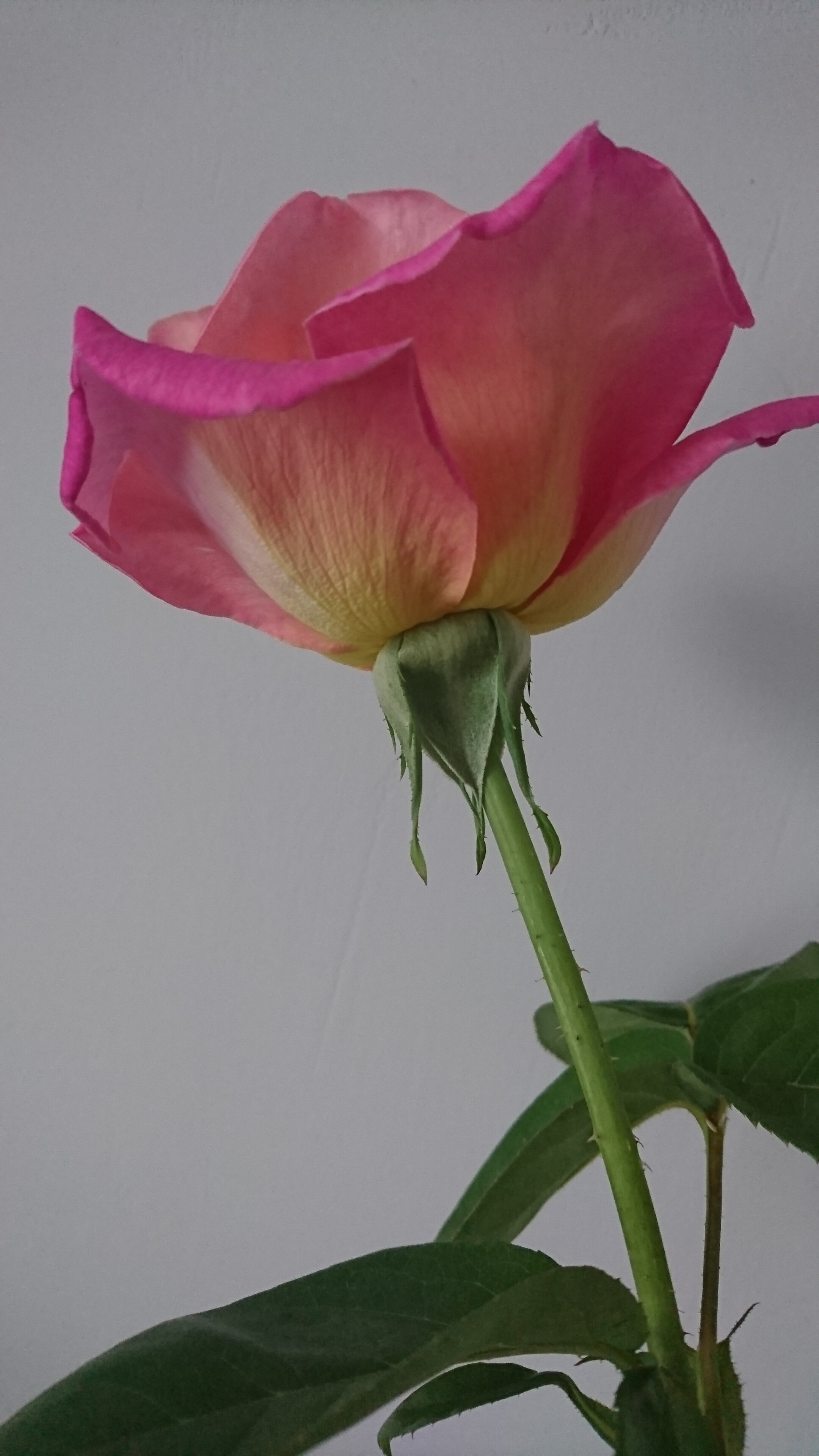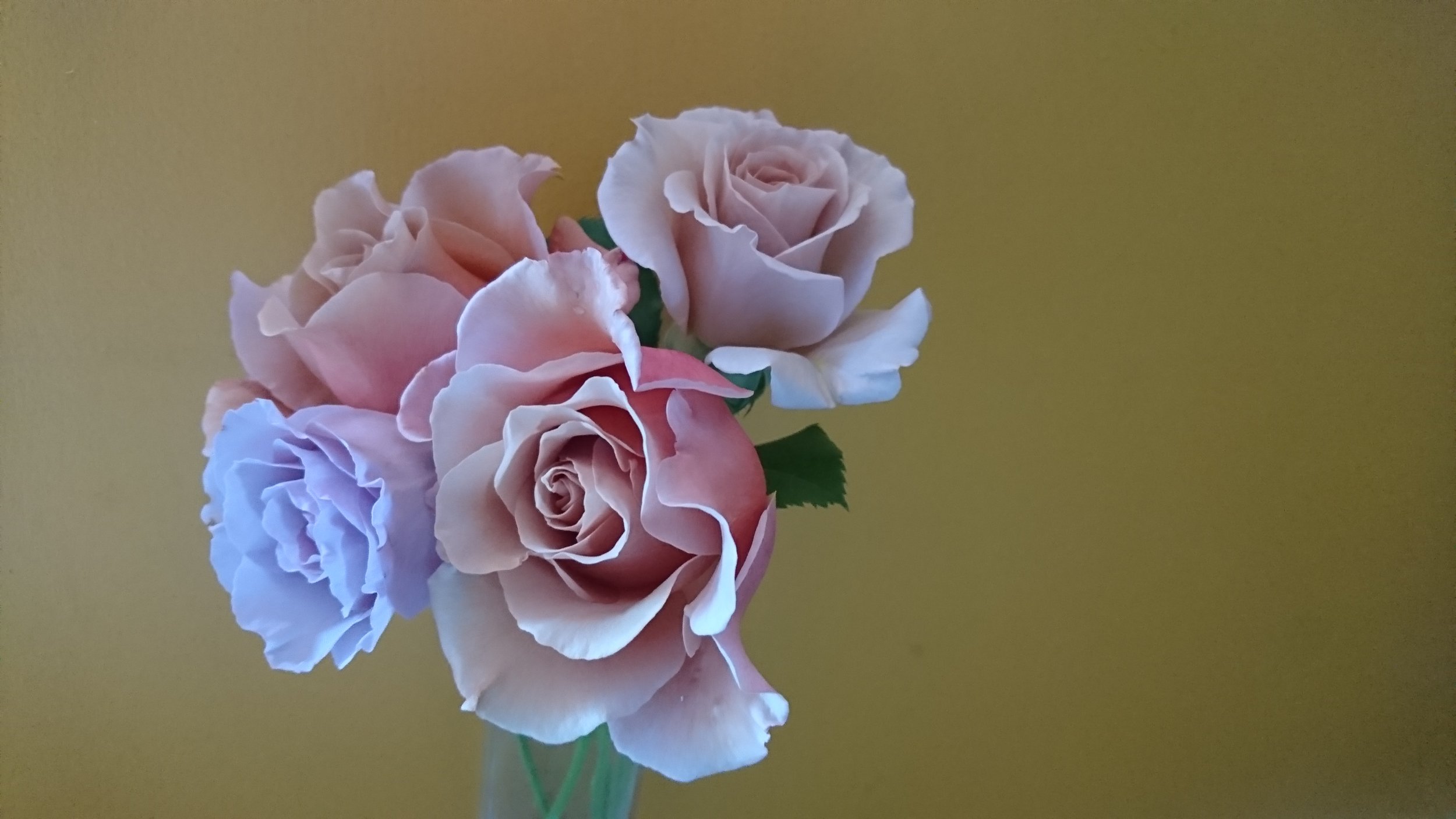Cutting and Conditioning
A full bed of roses, ready for cutting?
You’ve done everything right, chosen good varieties for your market, planted them in a perfect spot, cared for them and got them to grow and bloom beautifully. The final part of the job is to cut and condition the stems to provide what you and your customers need.
The basics of cutting flowers are:
Cut only in the morning or evening, when it’s cool
Use clean buckets and fresh water- using flower food is a personal choice. I don’t use it, I have excellent results from clean, cool water
Cut with sharp, clean snips or secateurs
Remove any foliage that will be under the water
Move into a cool dim space as soon as possible
Leave to recover for 2-3 hours minimum
Roses should be cut as above, but with a key additional step. If the cut stem of the rose is allowed to dry out at all, the rose can’t rehydrate and may droop. If it doesn’t actively droop it may fail to open any further. To prevent this, the stem needs to be re-cut again under water.
When cutting roses
Take 2 buckets of clean fresh water
Cut the stem from the plant - cut it long, I aim for 50-80cm depending on the variety. Cutting low gives the plant the message to grow more long stems.
Remove the lower leaves and any thorns that will cause problems when handling
Place the stem under water in bucket 1 and re-cut
Place into bucket 2 to condition fully
Once you have a few stems in a bucket it’s hard to get your hands and new stems under the water to re-cut so an additional bucket allows re-cutting without damaging the cut stems or catching your hands on rose thorns. It also means you don’t end up with a bucket of stem debris from the re-cutting mixing in with the rose stems for conditioning.
Re-cut stems under water to prevent the risk of dehydration
Cutting in adverse conditions
Wherever possible, it’s best to cut roses in dry, still conditions. However, there are times when we know poor weather is predicted but still need to cut stems from outdoor plants. If possible cut the blooms when they are still protected by guard petals, the petals just under the sepals. Although these may be mottled or rain damaged, they can be easily lifted off once the stem has dried off without affecting the bloom. The same can be done with blooms that are bruised by insects, as the outer petals protect the main bloom from significant damage.
What’s the right stage to cut a rose?
Well, that all depends on when they are going to be used, and to a certain extent on the variety of rose.
If you’re cutting for a wholesale order and the flowers won’t be used until 2-3 days after cutting, then they need to be cut in loose bud, so that they will be in full bloom for the event. Make sure the sepals are fully back and you can see the petals beginning to unfurl. If cut when the sepals are still covering the petals the bud may not open, or may open very slowly and produce a smaller bloom.
If you’re cutting roses for your own floristry and will be using them on the day of cutting or the next day, they can be fully open with the petals all showing. Be wary of cutting roses that are fully showing their stamens as they may not last more than a few hours in a warm place.
Some varieties of rose are quicker than others to go from bud to full bloom and it takes time to get to know the varieties and their individual behaviour. For example, Iceberg has a fairly simple shape and quickly moves from bud with reflexed sepals to full bloom, usually just 24-26 hours and this can be less in warm conditions.
In the gallery below
Row 1 shows buds in stages of opening, the right photo with sepals fully back
Row 2 shows blooms almost fully open, ideal for use within 24-36 hours
Row 2 shows 3 stages of the same bloom in bud, opening and fully open
A Thorny Issue
Most roses have thorns, though some more than others. This can make them spiky to handle for the flower grower and the end user. There are rose de-thorners available in a few different designs but think carefully before de-thorning.
What do you need to do to make the stems safe for you to handle? I tend to snip off any large thorns when cutting so that I can easily handle and sort the stems into orders. If I’m supplying a florist then that’s all I’ll do. If they are particularly thorny I’ll warn them when they are delivered or wrap in paper. I don’t use a thorn stripper for wholesale orders.
If I’m supplying roses as part of a retail order - a wedding bouquet, gift bouquet or DIY bucket - I’ll usually do a better job of clearing any thorns that could cause damage to clothing or skin. The recipient will be much less well prepared to deal with spikes and I see it as part of my service to make the flowers safe to handle. I occasionally use a rose stripper if the stem is very thorny but I’m careful to just take off the thorns and to avoid damaging the outer layer of the stem.
Just cut and ready for conditioning
Transportation
Imported roses grown in commercial conditions are handled roughly. They are packed in boxes, wrapped in cellophane and often transported out of water. Our roses definitely deserve better treatment!
Always transport in water
Support carefully - small bunches can be lightly wrapped in paper
Keep cool and upright
Avoid rough handling, they are delicate blooms and easily bruised
Using every stem
When you’ve worked hard to get your roses performing well and blooming magnificently, you won’t want to waste a single petal. There are a few options for those roses that arrive when you don’t have a use for them as fresh flowers:
fresh petal confetti
dried petal confetti - we have a dehydrator that turns ‘waste’ into a preserved asset
edible flower petals - if they’re grown without pesticides or herbicides, roses are an edible flower and petals can be made into syrup, essence and other edible products
dried flowers
Deadheaded roses ready to be dried for confetti
And of course, if you’ve grown and nurtured them there’s no reason why a lovely vase of exquisite blooms shouldn’t find their way into a vase for your home! There have to be perks when you’re a flower farmer or florist, enjoy your roses!
Thanks so much for completing this course. We’d very much appreciate your feedback if you could spare a few minutes to complete a short questionnaire.


